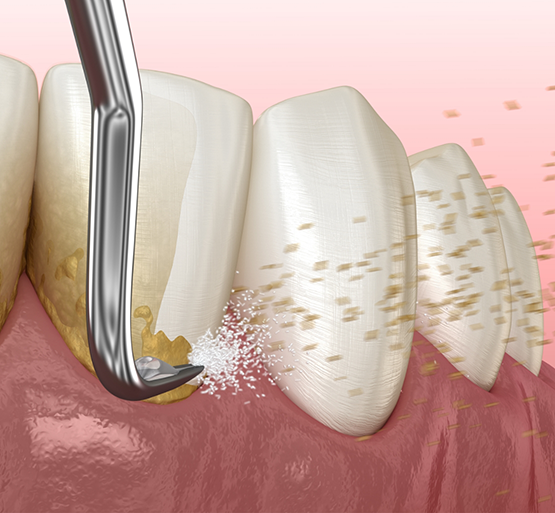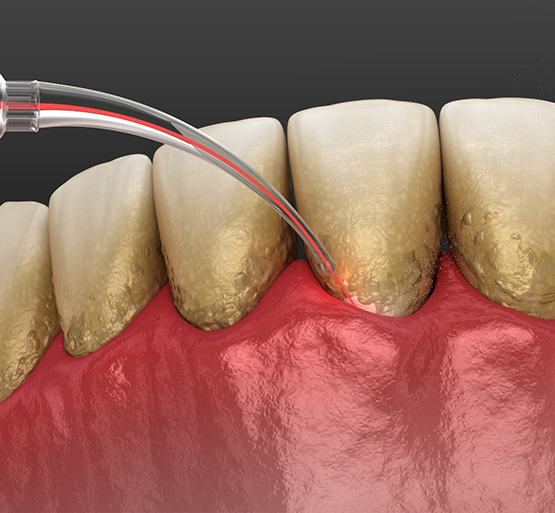Gum Disease Treatment Haverhill
Fighting Harmful Bacteria with Better Gum Health in Mind

According to the Centers for Disease Control and Prevention (CDC), nearly half of all adults in the U.S. are living with some form of gum disease. The good news is that gum disease treatment in Haverhill is available and can improve the health of your smile while also preventing serious harm to your body. Our dentists at Bradford Dental Care can use scaling and root planing, antibiotic therapy, and laser periodontal treatment to target the bacterial infection so that it doesn’t spread to the jawbone and cause tooth loss. If you notice bleeding, swelling, or redness along your gumline, call to schedule an appointment with our team today.
Why Choose Bradford Dental Care for Gum Disease Treatment?
- Innovative Laser Dentistry for Enhanced Comfort & Precision
- Dental Team Provides Patient-Centered, Caring Approach
- We Welcome Your PPO Dental Insurance
Scaling & Root Planing

Scaling and root planing is commonly used to remove plaque and tartar above and below the gumline so that you can enjoy better gum health in the long run. As a two-part process, our dentists will eliminate bacterial accumulations on the surface and within the gum pockets so these tissues will begin to heal and reattach over time. By treating the area closest to the root, we can reduce the chances of reinfection.
Antibiotic Treatment

Antibiotic treatment can be a beneficial addition when treating gum disease, removing remaining bad bacteria to leave your mouth healthier and free of infection. It is commonly used in combination with scaling and root planing, as it slowly disperses over time to eliminate any harmful particles within gum pockets and promotes successful healing.
Laser Periodontal Treatment

Superior comfort is always the goal at Bradford Dental Care, and it is one of the primary reasons our dentists offer laser periodontal treatment. The laser’s small beam of light targets diseased, infected tissues with greater precision while also restoring healthy gum tissue faster. What you’re left with is a smile that is more stable and less likely to experience tooth and bone loss over time.
